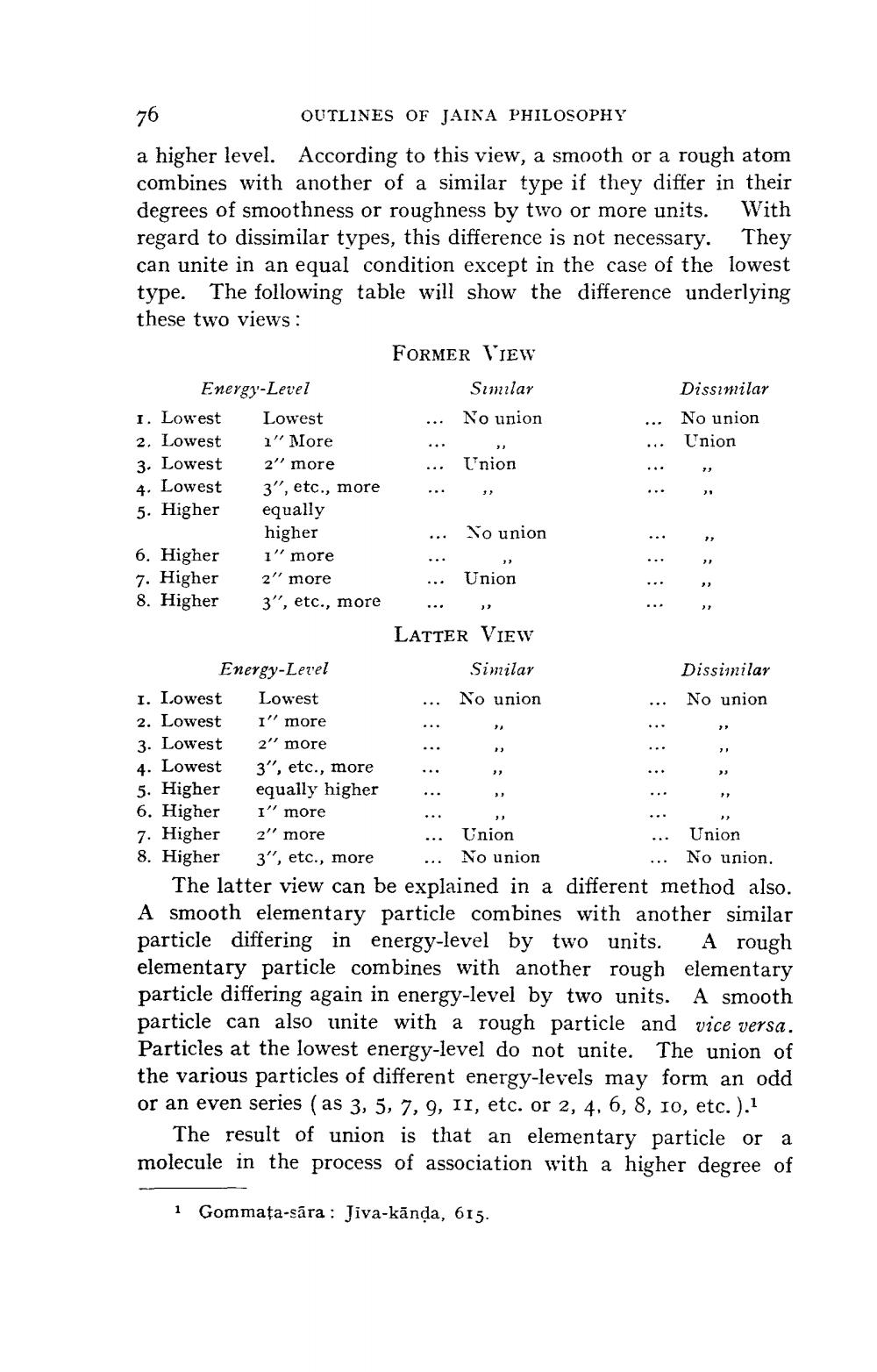________________
76
OUTLINES OF JAINA PHILOSOPHY
a higher level. According to this view, a smooth or a rough atom combines with another of a similar type if they differ in their degrees of smoothness or roughness by two or more units. With regard to dissimilar types, this difference is not necessary. They can unite in an equal condition except in the case of the lowest type. The following table will show the difference underlying these two views :
FORMER VIEW Energy-Level
Similar
Dissimilar 1. Lowest Lowest
... No union
No union 2. Lowest 1' More
Union 3. Lowest 2'' more
Union 4. Lowest 3", etc., more 5. Higher equally higher
Yo union 6. Higher I'more 7. Higher 2'' more
... Union 8. Higher 3", etc., more
LATTER VIEW Energy-Level
Similar
Dissimilar 1. Lowest Lowest
No union
No union 2. Lowest I more 3. Lowest 2" more 4. Lowest 3", etc., more 5. Higher equally higher 6. Higher I'more 7. Higher 2 more
... Union
Union 8. Higher 3", etc., more ... No union
No union. The latter view can be explained in a different method also. A smooth elementary particle combines with another similar particle differing in energy-level by two units. A rough elementary particle combines with another rough elementary particle differing again in energy-level by two units. A smooth particle can also unite with a rough particle and vice versa. Particles at the lowest energy-level do not unite. The union of the various particles of different energy-levels may form an odd or an even series (as 3, 5, 7, 9, II, etc. or 2, 4, 6, 8, 10, etc.).1
The result of union is that an elementary particle or a molecule in the process of association with a higher degree of
1 Gommața-sāra : Jiva-kānda, 615.




